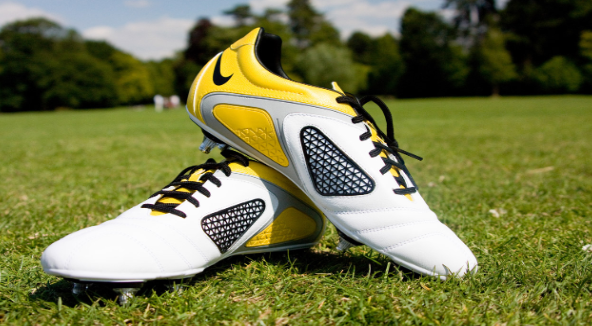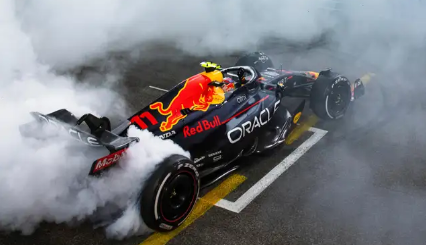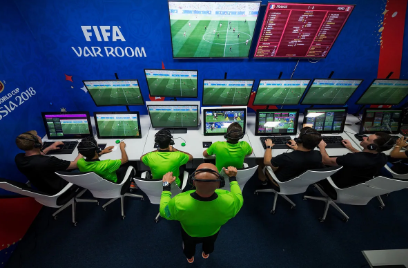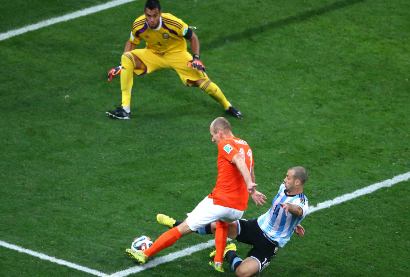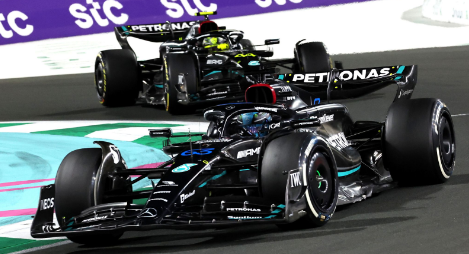Filed under:
Every athlete's least favorite words, “we're doing conditioning for practice today.” This phrase typically translates into hours of running, lifting, and what many would describe as sheer misery. Running is a crucial part of the most popular sport in the world and the vast majority of sports. So at a glance it makes sense that things like laps around the pitch and multi-mile runs would be prime conditioning. Yet when you look at the actual science behind the game it quickly becomes evident that simply running long periods isn’t the way to do conditioning.
In a study done by Frontier, one of the world's leading research publishers, they examined the average time and speed different professional players' positions were running during a game. What was found is that the vast majority of positions weren’t often at a high velocity rate, rather the players experienced many bursts of sprinting and physicality followed by longer periods of low velocity movement. Almost if not all crucial moments whether it be defending or scoring opportunities take place during this sprinting period. With a sizable portion of the game being low velocity there is little point in conditioning through long distance running as it works to support a long term high velocity rate. This makes it entirely unhelpful and while aerobic fitness is a huge part of the sport there’s a variety of ways to train that are still conducive to soccer's unique requirements. Let's go through some of the elements that you should include to condition like a pro.
With a majority of the game being low velocity with bursts of sprinting it’s no wonder that the two speeds typically interact. These sprints often have minimal build up and can mean the difference between a win or loss. Which explains why many high level coaches look for players with a high level of explosiveness. Being an explosive player starts with speed. According to Matt Stigler, renowned soccer strength and conditioning trainer, one of the keys to actually getting faster and therefore more explosive isn’t the movement of a player's legs but actually the force you push into the ground. Pushing more force into the ground allows for more push back this leads to you getting more speed faster. Here’s a few ways to best train this skill.
A key aspect of training the power portion of explosiveness comes before conditioning even starts. Through the use of dynamic warmups. When warming up take notice of how your foot strikes the ground and work to push more force into it. One of the best drills to include when working on explosiveness is side shuffle to sprints. The side shuffle gives a similar speed to low velocity running the transition to sprinting should be quick and smooth. The more you work at this transition the more explosive you become. For more advanced drills try incorporating multi directional hurdle jumps. This involves setting up hurdles at a variety of heights and positions and jumping over them. The jump builds leg muscles and helps with pushing off the ground. Regulating the rate of jumps helps players with the explosive aspect going from rapid changing jumps to slower more balanced focused jumps and vice versa.
Hardcore weight training and heavy lifting are often seen as a crucial part of an athlete's workout. Yet for soccer players there is little benefit to be found in this style of workout. Heavy lifting is actually harmful as it increases the risk for injury and reduces endurance. Strength is a huge part of any sport so how are you supposed to get fit and stay strong without weights? The answer lies within calisthenics based workouts. These workouts center around using a person's own body weight as training. This helps work the necessary muscles without the risks associated with weight lifting. It also helps work the ever important aerobic system. Here’s some of the best calisthenics workouts for players.
Naturally lunges had to make an appearance. Incorporating regular and reverse lunges into your workout strengthens the necessary leg muscles and keeps you flexible unlike heavy weight lifting. Adding resistance core strength exercises to your workout can be a game changer. Exercise like planks help to strengthen your core for what it does most of the time which is resist movement. Adding a plank to the beginning or end of your workout can make a world of difference in the long run as a string core provides an overall strong foundation. For the upper body things like push ups, pull ups, and press downs help to keep you flexible while still maintaining that necessary strength.
When discussing the conditioning for a sport as technical as soccer it’s important to take into account not just fitness but fitness in relation to skill. This is where programming for performance comes into play. The specific exercise program should be based on a players ability, position, and most importantly should include heavy ball work to maximize efficiency on the pitch. Here’s some tips on how to build your program.
First look at the demands for the position you play. For strikers a program focused on speed and maneuverability with finishing drills will be much better conditioning then one that focuses on endurance and long power shots. Understanding your position is the first step; the next is coming to terms with where you as an individual are at. Identify weak points and craft your program to target them, this can be done with the help of coaches and trainers or simply a fellow player. Finally make sure whatever your plan ends up being it has a ball handling focus. Conditioning with the ball helps to improve strength and skill, is as effective as traditional conditioning, and has a built in focus on performance helping you to improve your on pitch skills.
A key aspect of improving your conditioning is working on coinciding skills. Two of these coinciding skills are reaction time and explosiveness. Muscles will respond the way they are conditioned. When you practice fast twitch movements you engage the muscles involved in those movements. This means you are better able to engage that explosiveness earlier giving you an advantage. More than just muscle there is a nervous system aspect. Similar to the muscular system the nervous system can be conditioned. By implementing these exercises to your conditioning program you’re training those crucial fast twitch muscles and your nervous system. The most effective drills for reaction time involve two or more people so for the first one grab a few buddies. For the first drill, set up one or more balls between you and a partner. Having another person give some kind of signal to go for the ball the first person in possession wins a point. If need be this can be done alone with your cellphone. Set it up to sound off at different time increments and work on possessing the ball. To elevate this incorporate dribbling and one touch passes or shooting.
